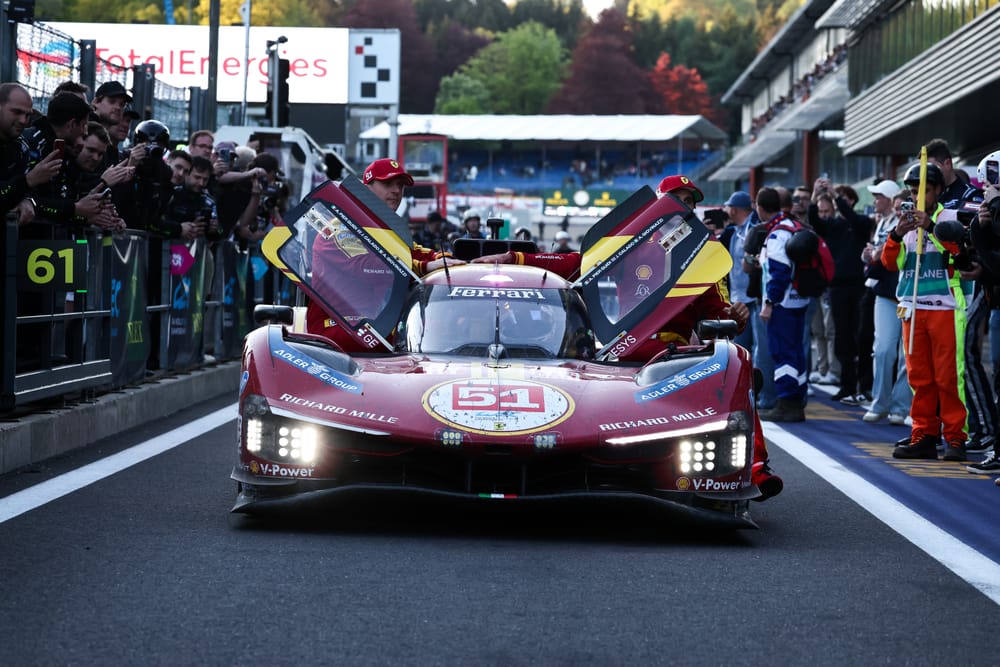The show the World Endurance Championship put on during the 6 Hours of Spa-Francorchamps - its last race before the Le Mans 24 Hours - was nothing short of spectacular.
But at no point were Toyota and Porsche able to challenge for the win.
How is it that the two manufacturers who battled it out for the titles last year have failed to finish on the podium in three races? Why has Porsche Penske Motorsport, dominant in the IMSA SportsCar Championship with four wins and four double podiums in as many races, failed to do better than eighth in the WEC? Is this cause for concern ahead of the Le Mans 24 Hours?
These questions have reignited the debate surrounding the Balance of Performance that governs the Hypercar class, with BoP becoming three letters synonymous with nightmare for all motorsport purists.
Why was the BoP system changed?
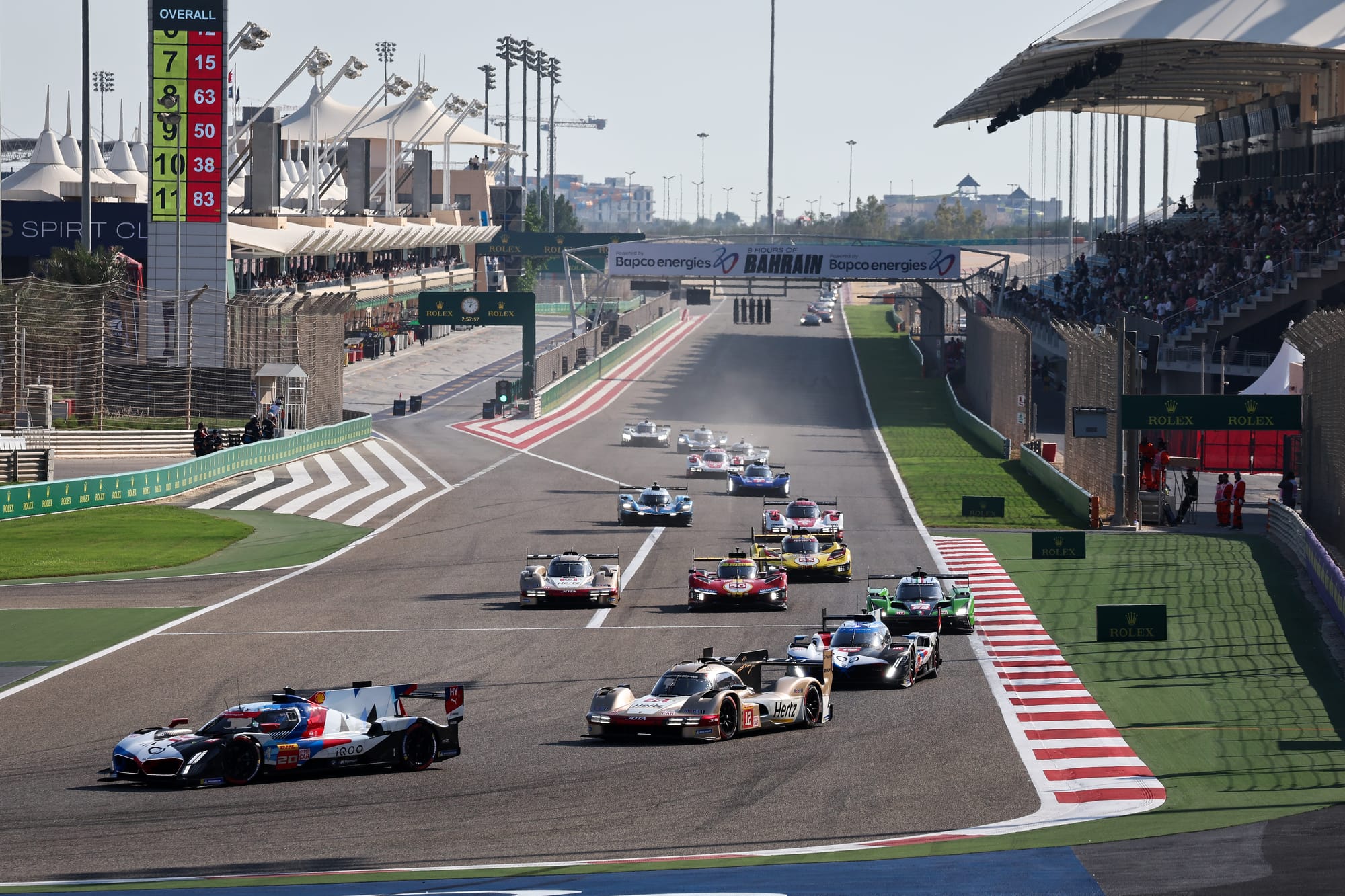
At the end of last year, the Balance of Performance had somewhat disappeared from discussions. From the Le Mans 24 Hours onwards, the balance of power did not seem skewed and many competitors described the BoP as fair, even though "BoP" and "fair" are two inherently contradictory terms.
With Ferrari winning at Le Mans and Austin, Toyota triumphing at Interlagos and Sakhir, Porsche taking the win, Cadillac securing pole position and BMW and Alpine finishing on the podium at Fuji, and Peugeot claiming a podium finish in Bahrain, everyone got something of varying value.
But, as we explained a few weeks ago, the governing bodies are aiming for 100% convergence this year. The theoretical goal is therefore for all cars to be able to set the same lap times, whereas last year we were talking about a wide window of 0.4% relative to the average of the top 20% of best laps average across the field. Accordingly, the data used to calculate Manufacturer Compensation has also changed.
"Last year we took the best 20% laps average," explained Thierry Bouvet, ACO international technical delegate.
"Now we use a combination of the 10 best lap times (1/3 of the equation) and best 60% laps average (2/3 of the equation), so it is more race representative. There are still slight differences between LMH and LMDh, so we needed to take into account more laps to remove these small differences."
As a reminder, Ferrari, Peugeot, and Toyota all have an MGU connected to the front axle, enabling four-wheel drive from 190km/h (118mph). According to their rivals, this allows them to simulate a kind of ABS that gives them an advantage in braking zones and tricky conditions, something prohibited by the regulations, and denied by the teams. Additionally, these manufacturers must manage the extra weight and reliability issues associated with an additional drivetrain.
Meanwhile, having the MGU on the rear axle offers benefits too, especially in traction control and power management. There are pros and cons on both sides, but when the ACO and FIA decided to merge LMH and LMDh, each camp made compromises. So much so that one of the three BoP parameters, Platform Equivalence, was removed from the equation before last year’s Le Mans 24 Hours race.
Why such gaps at the start of the season?

Since the 2024 6 Hours of Sao Paulo last July, the governing bodies no longer base Manufacturer Compensation on the most recent race alone, but on the last three. This partly explains what’s happened in the first three rounds of 2025. Ferrari is benefiting from a disappointing end to its 2024 season to start 2025 with a bang.
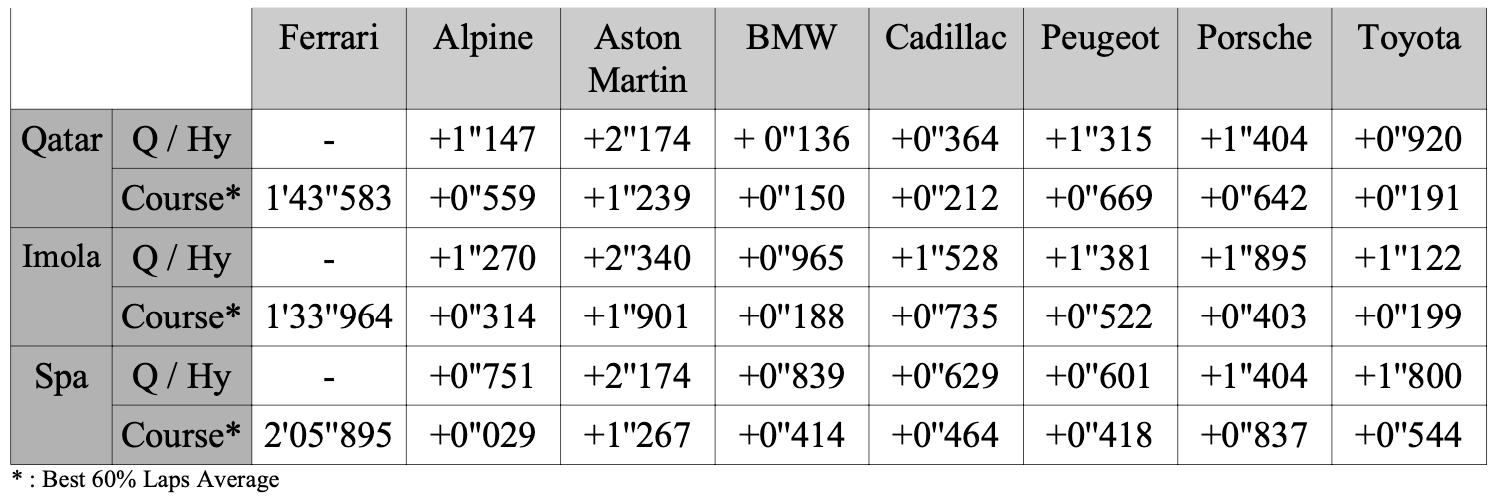
After the 2024 Lone Star Le Mans at Austin last September and with Ferrari’s title hopes virtually gone, the 499Ps were oddly subdued in the final three races, posting performances far from what had been seen earlier in the year.
These underwhelming displays are hard to explain, especially since Ferrari had used an Evo Joker after Le Mans, supposedly to enhance versatility and performance at late-season tracks, according to the team’s engineers.
Conversely, Porsche and Toyota are being punished for having the fastest cars during those three races. Their battle for the 2024 drivers’ and constructors’ championships lasted until the final hour in the Bahrain finale.
In the paddock, many regret that the previous season has an impact on the current one, as it allows teams with nothing left to fight for to begin planning for the following year.
This new system has resulted in a different balance of power compared to last year. Although Ferrari was very dominant at Imola in 2024, it was penalised far less this year than some rivals who had struggled at the Autodromo Enzo e Dino Ferrari a year earlier.

However, it is also worth highlighting the strong performance of Ferrari AF Corse and the progress made since the start of the programme, both from an organisational and operational point of view. We will return to these two aspects later. But how does the Italian team justify this leap forward?
"Over the winter, we worked on the car and all our operational tools, seeking to optimise them in every area while improving our racing team," said Ferrari’s Head of Endurance Race Cars Ferdinando Cannizzo.
"From the second half of the 2024 season onwards, we introduced many modifications to the car, all compliant with the regulations. Half of these focused on improving reliability, around a quarter on regulatory updates, while for the rest, we sought to optimise all areas where we found performance gaps with our competitors."
"We worked hard to expand the set-up window, evaluating new philosophies aimed at better exploitation of the aerodynamics on the one hand and of tyre performance in all conditions on the other," he added. "To complement all this, we are committed to the continuous development of control systems. This aspect continues to improve across all areas to enhance precision and provide ever-faster responses to driver inputs."
This progress and the car's potential seem to have been underestimated by the ACO and the FIA, given the scenario at the start of the season, which bears no resemblance to a championship that is supposed to be governed by a BoP that compensates for performance 100%. Those concerned have certainly realised this and acted accordingly.
Manufacturer Compensation modified again after Imola
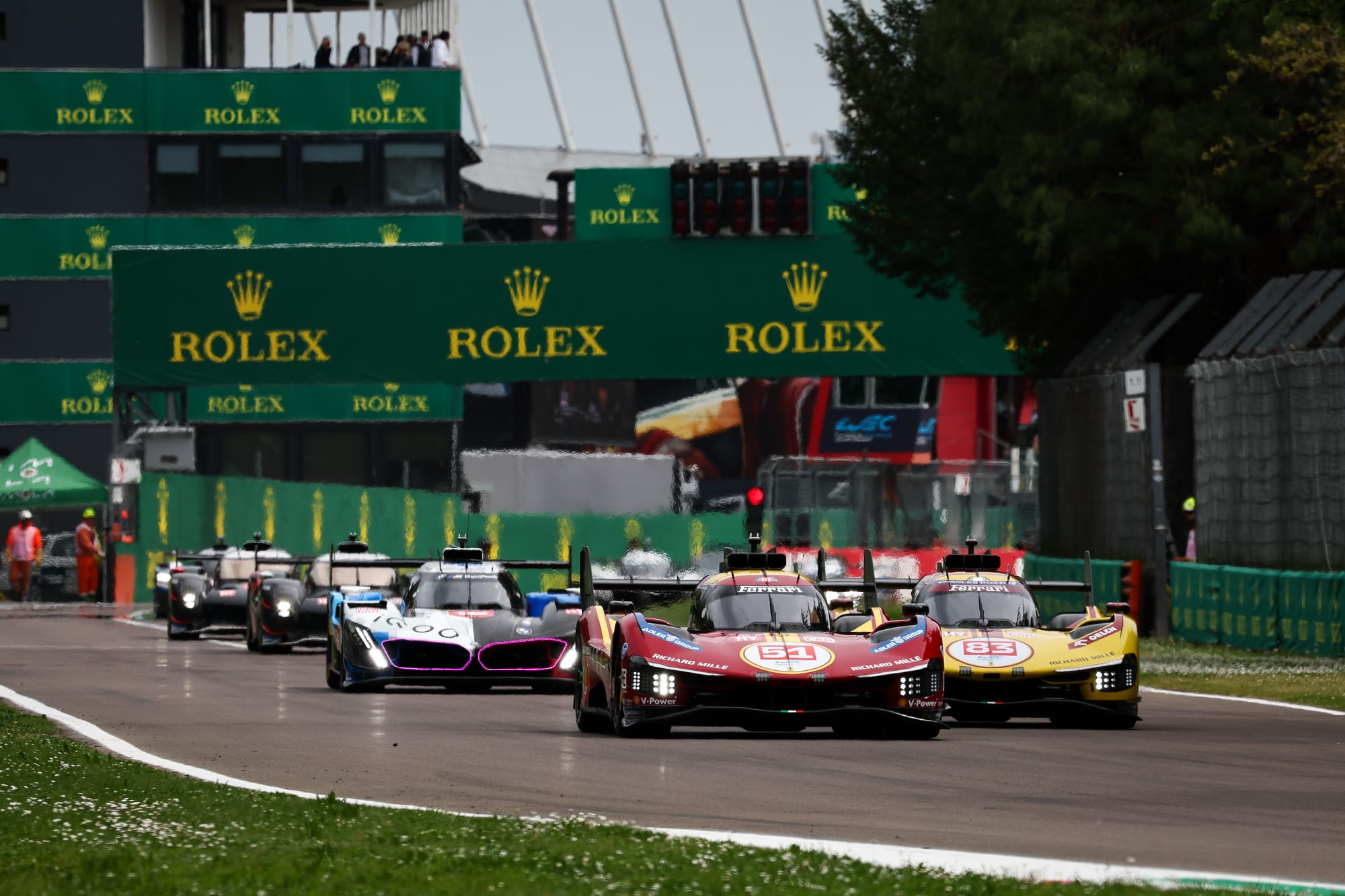
We were surprised to learn upon arriving at Spa-Francorchamps that the way Manufacturer Compensation is calculated had changed again. The process is complex - very complex - but for many specialists and actors, these constant changes are proof that the system is not fully mastered. But is it even possible to master it?
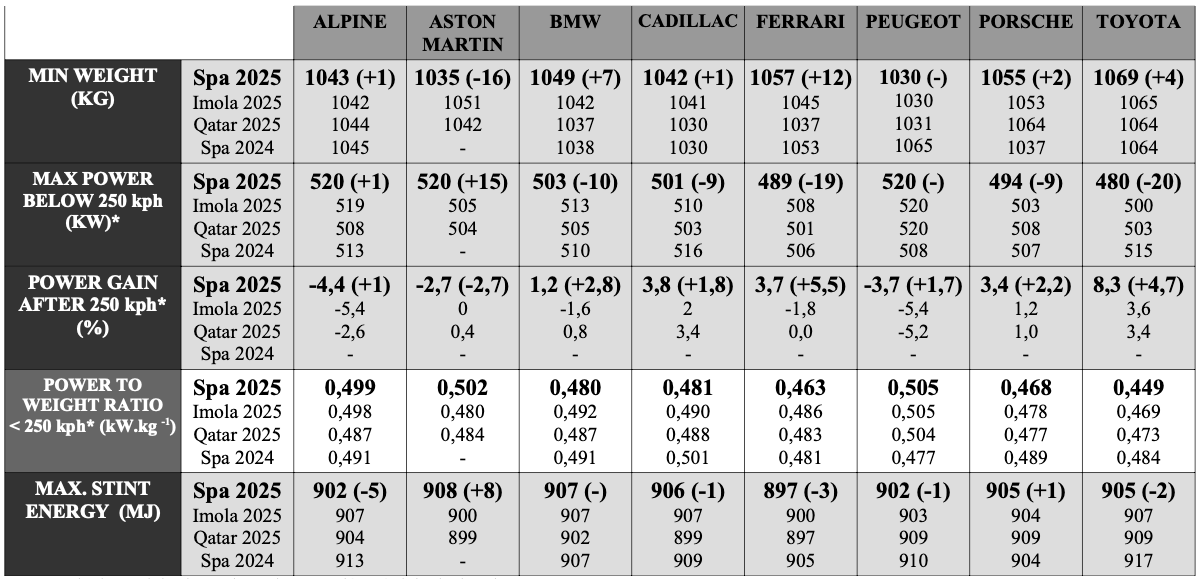
Presumably in an effort to curb Ferrari’s dominance, the ACO and FIA decided to no longer base Manufacturer Compensation on the last three races, but on the best two out of the last three races for each competitor. For example, the data used for Ferrari and BMW would come from Qatar and Imola; for Toyota and Porsche, likely Bahrain 2024 and Imola, etc.
This change was intended to more quickly balance the field and perhaps bring Ferrari back in line. But it made no difference: Ferrari's 499P once again controlled the weekend at Spa, claiming a third pole, a third fastest lap and a third win in as many races.

Are Toyota and Porsche hiding their game?
In Spa qualifying, Porsche was 1.4s off Ferrari, and Toyota 1.8s. We had never seen such gaps between the three giants of the Hypercar class. Neither Porsche nor Toyota made it to Hyperpole. This raised suspicions of sandbagging deliberate underperformance to influence the BoP ahead of the all-important Le Mans race.
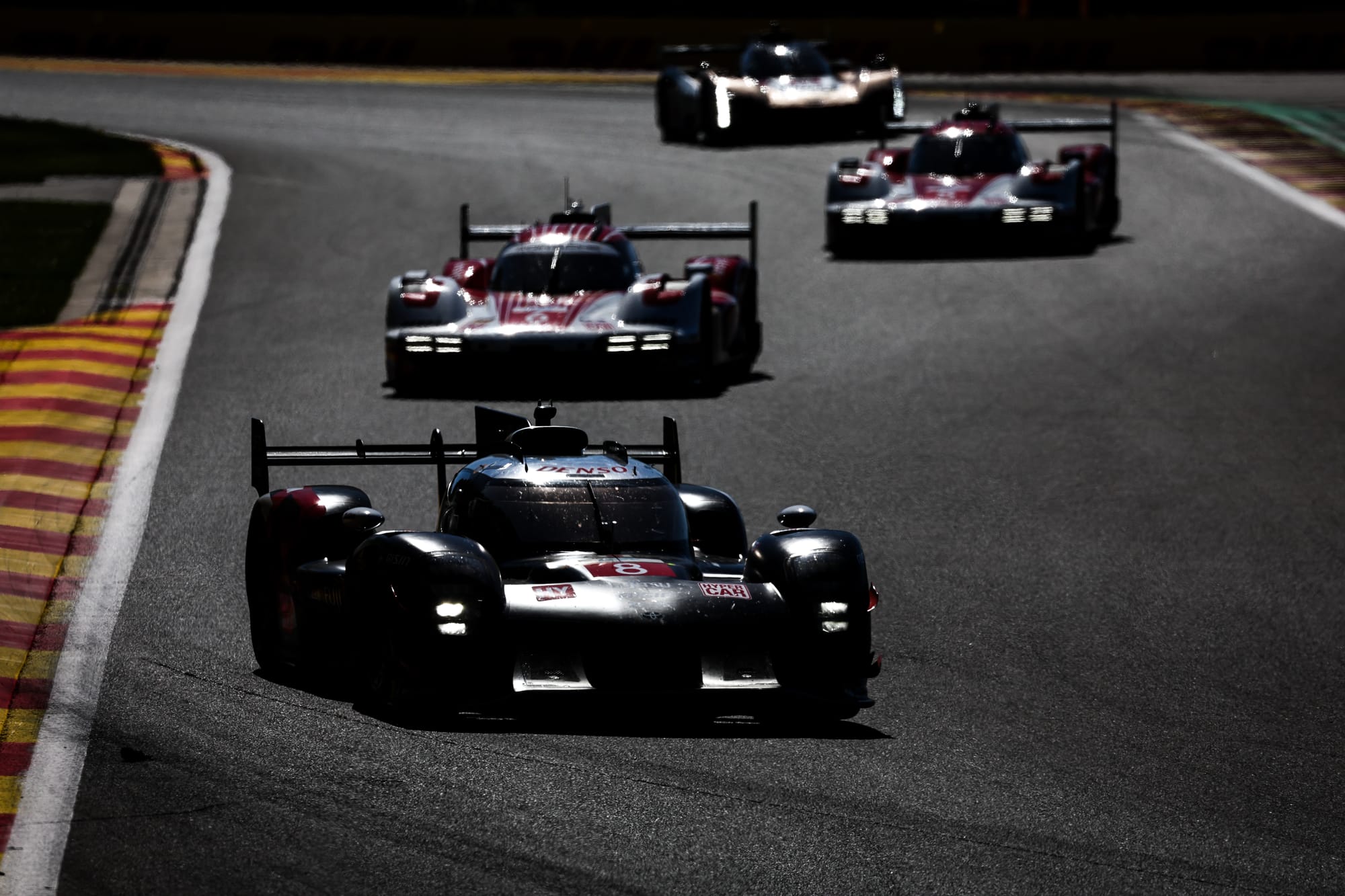
The next day, in the race, based on the average of the 60% best laps, Toyota and Porsche were 0.544s and 0.837s off Ferrari, respectively. Only newcomer Aston Martin did worse. Based on the average of the best 20% of laps, the gap widened to 0.877 and 0.926 seconds. One unexplained anomaly adds to the suspicion: Porsche’s #5 963 clocked a 2m04.109s lap on lap two only bettered by Antonio Fuoco (Ferrari #50) much later in the race by 0.310s.
But what would be the point of Toyota and Porsche hiding their true pace in qualifying - especially Toyota, which is known for unexpected strong performances in that format? As you may know, Manufacturer Compensation is based only on race data. Also, as FIA technical engineering director Thomas Chevaucher stated: "Le Mans is outside the process. It's not based on the WEC races. This Le Mans process is as it was done last year."
Some argue that the gap in qualifying was too big to be revealing and therefore suspicious. Neither Toyota nor Porsche appear to have maximised their potential on Friday at Spa. They don’t deny it or even explain it, but neither was in a position to gain 0.5s. Both also acknowledged that they expected the gap to be smaller in the race, which was the case. But are the gaps simply too large to be intentional? If not, it would make them poor bluffers…
At Toyota, complaints are also growing louder over their car’s lack of "raceability" due to low power and high weight (see BoP tables above). "It’s unacceptable," fumed Sébastien Buemi. "We can’t race. You can’t pass anyone on the straights, so the only way to gain places is in the pitlane. That’s not the goal. Only strategy gives us a chance, but we can’t work miracles every race."
Is the championship already over?
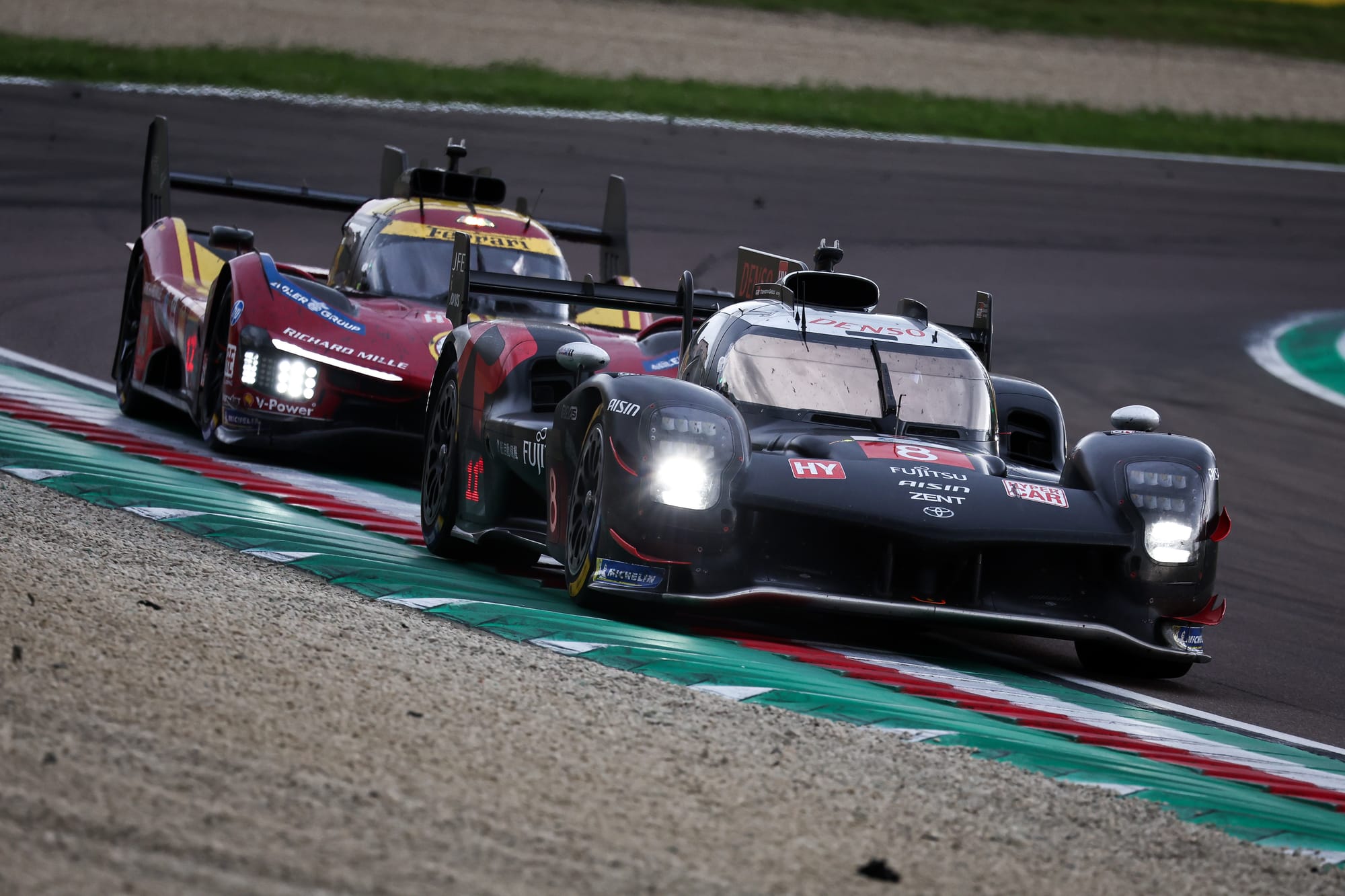
Beyond outright car performance, Porsche Penske Motorsport has also made some questionable strategic calls this season, partly explaining its poor results. Toyota, by contrast, seems to have maximised its potential, with two fifth places and a fifth, placing it second in both the drivers’ and manufacturers’ standings.
"I think we can be proud of what we've achieved so far this season," said Toyota technical director David Floury. "We're the best of the rest in both championships right now.
"But we can't be pleased with this year. It's not what we came here to race for. We've been told that if we execute it to perfection, we stand a chance. This was the case, and we never stood a chance..."
Porsche is also starting to get annoyed, subtly pointing the finger at the BoP, which competitors are prohibited from discussing, as stipulated in Article 6.2.1 of the WEC sporting regulations.
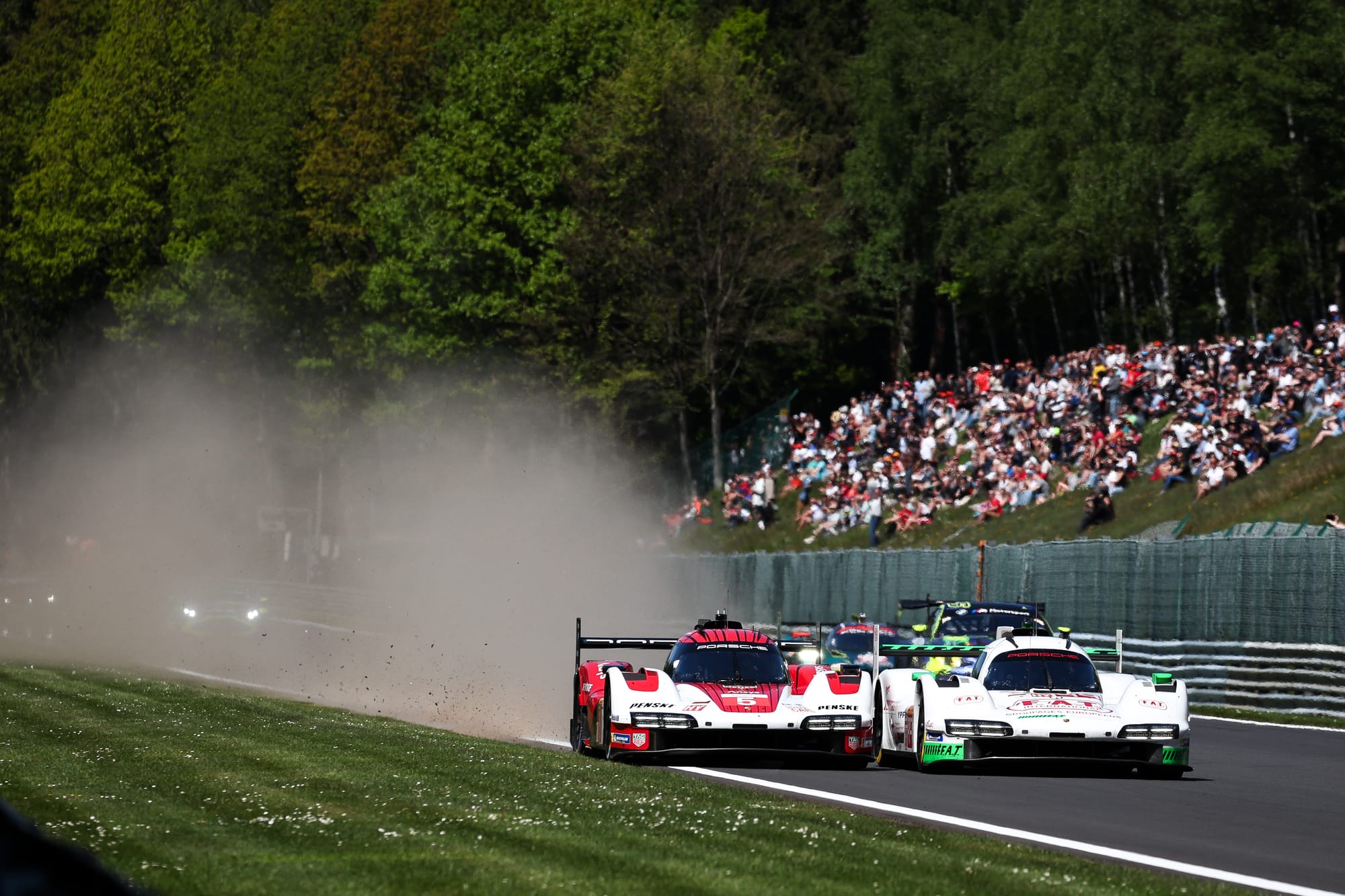
"The team put in another good effort, even if we may not have done everything perfectly," explained Thomas Laudenbach, Vice President Porsche Motorsport, after Spa.
"We need to acknowledge that the conditions for a better result weren't there. As always, we will analyse why, especially since the Le Mans 24 Hours is up next. But I think there is also a massive need for action outside of our organisation. The race speaks for itself."
The message is clear...
"It seems we have our own championship with Porsche," quipped Floury. "We've been fighting with them most of the time, like last year. So I think we should create our own virtual championship, just the two of us, to remind us of the days when we could fight for a world championship."
After three rounds, Ferrari occupies the top three spots in the drivers’ standings and has 136 points in the manufacturers’ championship, 65 more than Toyota and 72 more than third-placed BMW. Porsche, sitting third-to-last, has just 14 points! Last year, after three races - when only the best car scored manufacturers’ points - Porsche led with 83 points, ahead of Toyota (60) and Ferrari (59).
And yet, in 2024, the BoP did not compensate for performance 100%. You have to admit that this is thought-provoking. Even though the points system and calendar have changed, such a gap after three races hasn’t been seen since 2012, the year the World Endurance Championship was revived. That year, Toyota skipped the first two rounds and then suffered a double DNF at Le Mans, leaving Audi unopposed.
With more manufacturers than ever before competing in the top class of endurance racing, it is somewhat ironic that, at the end of May, the 2025 WEC and IMSA seasons already seem to be all but over, with a single winner on each side: Ferrari in the world championship and Porsche in the United States.
"If Ferrari do achieve a good Le Mans, the championship chances will be very slim for anyone other than themselves," Floury concluded.
"As the promoter of the championship, I would not be so happy because the interest in the championship in the second half of the season would be very low. That's a fact. Is this what we want to achieve? With all the tools we have, I don't think so. But that's not up to me to manage this part."
So, of course, the BoP system will logically impact Ferrari starting with the São Paulo 6 Hours (the Le Mans 24 Hours are not taken into account). But is the lead already too great?
Is this concerning ahead of Le Mans?
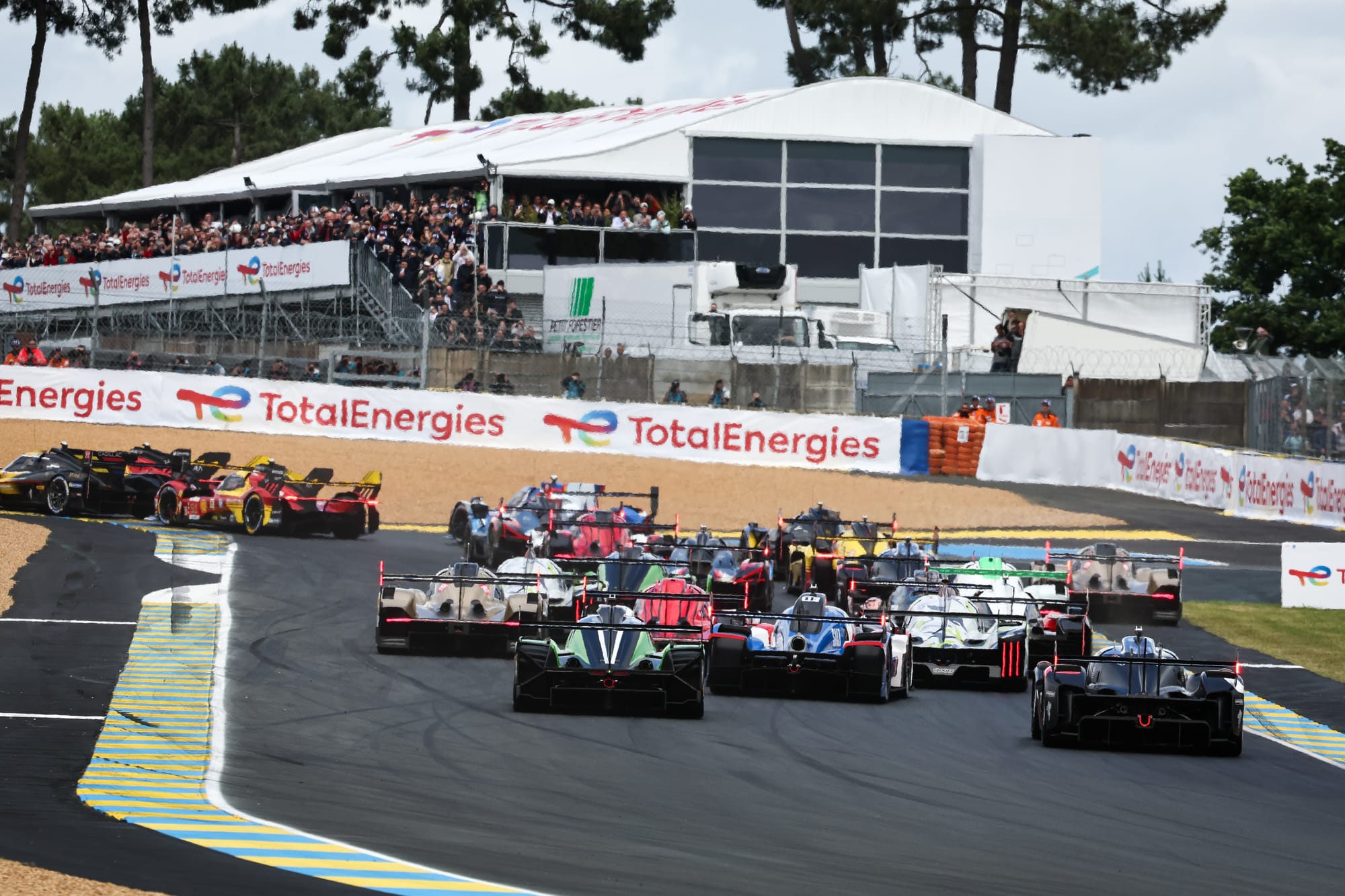
As we explained a few weeks ago and reiterated above, the BoP for the 24 Hours of Le Mans is a separate case. "Le Mans is treated separately," explained ACO international technical delegate Thierry Bouvet in early 2024. "It's a race that needs to be approached differently."
This is due to the nature of the track, but even more so to the importance of the event. There is no question of giving competitors the opportunity to hide their game in the early races in order to benefit from a more advantageous BoP in La Sarthe. Nor is there any question of basing decisions on the previous edition to prevent a newcomer from sacrificing one edition to maximise their chances in the next.
So what can be done? As last year, the ACO and the FIA are supposed to rely solely on the Homologation Parameters. "They are based on information gathered in the windtunnel, the centre of gravity, the average amount of fuel on board, etc.," explained Bouvet. "All this data, combined with that gathered on the tracks, allows us, thanks to our simulation tools, to define these approval parameters."
Homologation Parameters evolve with each race because they depend on track-specific set-ups: "The aerodynamic performance of the cars is evaluated in a windtunnel, and once they are within the performance window, we freeze them and scan the car. These data become our reference."
On paper, it makes sense. And if this method holds, the BoP at Le Mans should be similar to last year’s. Similar - but not identical - since all manufacturers (except Toyota) have used an Evo Joker since the 2024 edition, which necessarily changed their Homologation Parameters.
But will it actually play out that way? LMDh manufacturers are calling for a helping hand, with Porsche 963 and Cadillac V-Series.R having been unable to match Toyota and Ferrari in the closing stages of last year’s race. Will the ACO and FIA bend their principles to satisfy them? It's possible, since despite revoking the Platform Equivalence at the same time last year, they revised their BoP system, arguing that LMH cars have an advantage over LMDh cars.
What is certain is that last year, more than the BoP, it was the decisions of the race director and the stewards that sparked debate in the duel between Ferrari and Toyota. The BoP was far from absurd, at least between the GR010 Hybrid and the 499P, two cars that comply with LMH regulations.
Now more than ever, teams await the Le Mans BoP with anticipation. Last year, it was published on May 31 - just 10 days before the test day. Like it or not, that BoP will go a long way toward shaping everyone’s chances.
Let's just hope that once it's announced, we'll be talking about nothing but sport.

